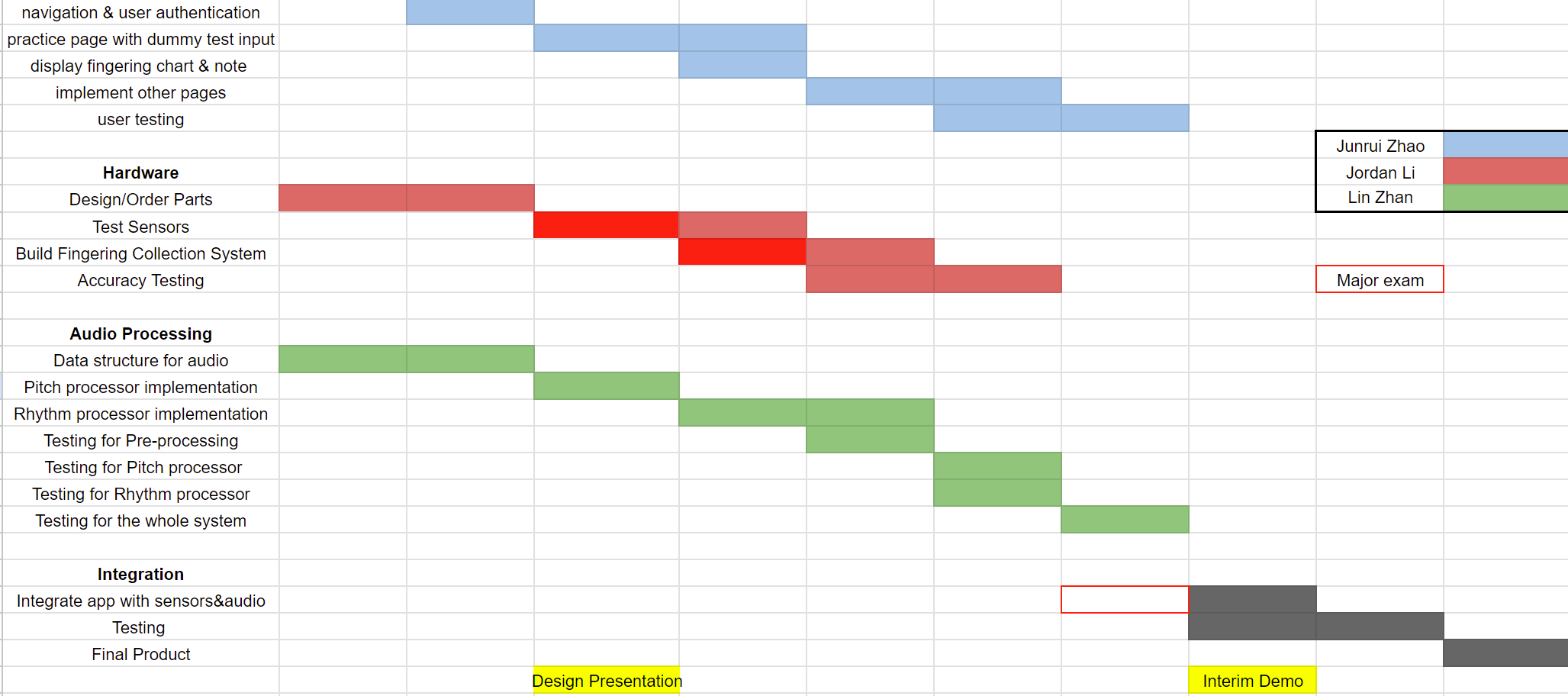This week, I finished the assembly of the fingering collection system. All sensors are installed and tested, and now all that is left is software. Testing is also completed, and performance is within the use case requirements.
For next week, I will start working on the integration with the rest of the system. I will need to map all sensor data to actual fingering data for the web server, as well as developing a way to coordinate the recording of both fingering and audio together for the system to analyse. The biggest issue is synchronisation, as the audio and fingering are collected on different devices, and the timing will be important. All of this is based on the discussion I had with my team earlier this week, and we finalised on the specific format of the outputs.
I am still on track, according to last week’s schedule. My individual part is mostly complete, now it is just integration.

